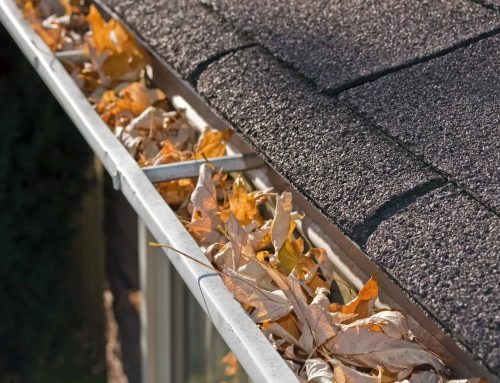Basement water damage can devastate your home and cost thousands in repairs, yet most water infiltration problems stem from preventable drainage issues around your property’s exterior. Understanding these common drainage failures and their warning signs allows homeowners to address problems before they escalate into costly basement flooding disasters.
Toronto’s challenging climate amplifies drainage problems through freeze-thaw cycles, heavy rainfall events, and rapid snowmelt conditions that can overwhelm poorly designed or maintained water management systems. The Greater Toronto Area’s clay-heavy soils further complicate matters by limiting natural drainage while expanding and contracting with moisture changes, creating additional pressure on foundation walls. Recognizing and addressing these drainage vulnerabilities before they cause basement leaks is essential for protecting your home and investment.
Failed Eavestrough Systems: The Leading Cause of Foundation Water Problems
Eavestrough failures represent the most common cause of basement water infiltration, as these systems handle the enormous volume of water that runs off your roof during Toronto’s intense rainfall and snowmelt events. When eavestroughs fail to function properly, thousands of gallons of water can be misdirected toward your foundation instead of safely away from your home.
Improper Installation and Sizing Issues
Many Toronto homes suffer from undersized eavestrough systems that cannot handle the region’s precipitation intensity. The building standards that were common decades ago often specified smaller eavestroughs than what’s needed for today’s weather patterns, which include more frequent extreme rainfall events.
Incorrect slope installation is another critical problem that prevents proper water flow toward downspouts. Eavestroughs must maintain a consistent slope of approximately 1/4 inch per 10 feet of run to ensure water moves efficiently rather than pooling in sections where it can overflow or freeze during winter months.
Inadequate fastening allows eavestroughs to pull away from the fascia board over time, creating gaps where water can pour directly onto the foundation. Toronto’s freeze-thaw cycles place additional stress on poorly secured eavestrough systems, accelerating failure and increasing the risk of sudden water redirection problems.
Blockage and Maintenance-Related Failures
Clogged eavestroughs from leaves, debris, and granule accumulation create backup conditions that force water to overflow at the worst possible locations. Toronto’s abundant urban canopy means eavestrough cleaning is particularly critical, as even small accumulations can create ice dams during winter months.
Damaged or separated joints between eavestrough sections allow water to leak out before reaching downspouts, often directing water directly against the foundation. These leaks may appear minor but can channel significant water volume during heavy precipitation events common in the GTA.
Corroded or damaged eavestrough materials, particularly in older galvanized steel systems, develop holes and weak points that redirect water unpredictably. Toronto’s road salt and urban pollution can accelerate corrosion, making regular inspection and timely replacement essential for basement protection.
Ice Dam Formation and Winter Complications
Toronto’s winter conditions create ice dam risks that can completely compromise eavestrough function. When ice accumulates in eavestroughs and downspouts, subsequent snowmelt has nowhere to go except over the sides, often directly onto areas adjacent to the foundation.
Poor attic insulation and ventilation contribute to ice dam formation by allowing heat to escape through the roof, melting snow that then refreezes at the eaves. This creates a cycle where eavestrough function is progressively compromised throughout the winter season.
Downspout Deficiencies and Water Discharge Problems
Even properly functioning eavestroughs cannot protect your basement if downspouts fail to direct water sufficiently away from your foundation. Downspout problems are particularly critical in Toronto’s clay soil conditions, where poor drainage can quickly lead to water accumulation around foundation walls.
Inadequate Water Discharge Distance
The most common downspout problem involves inadequate discharge distance from the foundation. Water must be directed at least 6 feet away from foundation walls, and preferably farther in Toronto’s clay soil conditions that drain poorly and retain moisture.
Many homes have downspouts that discharge directly beside the foundation or into areas where water naturally flows back toward the house. This creates concentrated water infiltration pressure that can overwhelm foundation waterproofing and lead to basement leaks.
Underground downspout extensions that become blocked or damaged can cause water to surface near the foundation instead of at the intended discharge point. Toronto’s freeze-thaw cycles can crack or separate underground drainage connections, redirecting water back toward the basement.
Downspout Capacity and Flow Issues
Undersized downspouts cannot handle the water volume from large roof areas during Toronto’s intense rainfall events. When downspouts are overwhelmed, water backs up into eavestroughs and eventually overflows near the foundation.
Multiple roof areas draining into single downspouts can create capacity problems during peak flow conditions. This is particularly problematic in Toronto’s older neighborhoods where homes were built with minimal downspout capacity relative to roof area.
Damaged or partially blocked downspouts restrict water flow, creating backup conditions that can force water out of eavestrough joints or cause overflow situations during heavy precipitation.
Seasonal Downspout Challenges
Frozen downspouts are a significant problem during Toronto winters, as ice blockages prevent normal drainage and force eavestrough overflow. This can create ice accumulation around the foundation that melts and infiltrates basement areas during temperature fluctuations.
Downspout disconnection from underground drainage systems during freeze-thaw cycles can redirect water away from intended discharge points and back toward the foundation. Regular inspection and maintenance of these connections is essential for reliable basement protection.
Foundation Grading and Surface Water Management Failures
Proper grading around your foundation is fundamental to basement water protection, yet many Toronto homes suffer from grading problems that direct surface water toward rather than away from foundation walls.
Negative Grading and Settling Issues
Negative grading, where soil slopes toward the foundation instead of away from it, creates a direct pathway for surface water to reach basement walls. This can occur due to initial construction errors, soil settling over time, or landscaping changes that alter natural drainage patterns.
Toronto’s clay soils are particularly prone to settling and shifting, which can change grading over time and create water collection areas adjacent to foundations. Regular inspection and correction of grading issues is essential for long-term basement protection.
Improper backfill during construction can create settling patterns that develop into negative grading situations years after initial construction. This is particularly common in Toronto’s newer developments where construction schedules may not allow adequate soil compaction time.
Surface Water Collection and Ponding
Low areas or depressions near foundation walls collect surface water during rainfall and snowmelt events, creating hydrostatic pressure against basement walls. These areas may not be immediately obvious but become problematic during Toronto’s spring thaw when large volumes of water seek drainage paths.
Hardscaping features like driveways, walkways, and patios that direct water toward the foundation rather than away from it can concentrate surface water flow and overwhelm local drainage capacity. Proper design of these features should always consider water management implications.
Landscaping that creates water collection areas near the foundation, such as planting beds that act as water retention zones, can inadvertently increase basement leak risks during heavy precipitation events.
Seasonal Surface Water Challenges
Toronto’s winter conditions create unique surface water management challenges when frozen ground prevents normal drainage absorption. Snowmelt can create significant surface water flow that must be managed effectively to prevent foundation infiltration.
Spring thaw events can generate massive surface water volumes in short time periods, overwhelming inadequate drainage systems and creating temporary ponding situations around foundations. Properties with marginal grading may experience problems only during these extreme conditions.
Perimeter Drainage System Deficiencies
Foundation perimeter drainage systems, including French drains and other subsurface drainage methods, play a crucial role in basement water protection but can fail due to design inadequacies, installation problems, or maintenance neglect.
French Drain Installation and Performance Issues
Improperly installed French drain systems may lack adequate slope to move water effectively away from the foundation. The minimum slope requirement of 1% (1 inch per 100 inches) is essential for proper function, but many installations fail to maintain this gradient throughout the system length.
Inadequate pipe sizing for Toronto’s precipitation patterns can result in French drain systems that become overwhelmed during heavy rainfall or rapid snowmelt events. Sizing calculations must account for both surface water collection and groundwater interception requirements.
Poor gravel selection or inadequate gravel depth can compromise French drain performance by reducing water infiltration capacity or allowing soil intrusion that clogs the system over time. Proper gravel gradation and depth are essential for long-term system effectiveness.
Maintenance and Longevity Challenges
French drain systems require periodic maintenance to maintain effectiveness, but this maintenance is often neglected because the systems are largely invisible. Accumulated debris, soil intrusion, and root infiltration can gradually reduce system capacity until failure occurs during peak demand periods.
Improper landscape fabric installation or degradation over time can allow soil particles to enter the drainage system, leading to gradual clogging that may not become apparent until the system fails completely during a major precipitation event.
Connection points between French drain systems and discharge outlets are vulnerable to damage from freeze-thaw cycles, settling, or landscaping activities. Failed connections can redirect water back toward the foundation instead of away from it.
Integration with Other Drainage Systems
French drain systems must be properly integrated with other drainage components, including downspout discharge, surface drainage, and municipal storm systems. Poor integration can create conflicts where different systems work against each other rather than providing coordinated water management.
Discharge point management is critical for French drain effectiveness, as inadequate discharge areas can cause system backup that reduces overall performance. Toronto’s municipal drainage requirements must be considered when designing discharge strategies for residential French drain systems.
Preventing Drainage Problems Through Proper Assessment and Maintenance
Understanding common drainage problems is the first step toward preventing basement water damage, but effective protection requires systematic assessment and proactive maintenance tailored to Toronto’s specific climate challenges.
Comprehensive Drainage System Evaluation
Regular inspection of all drainage components allows early identification of problems before they lead to basement water infiltration. This includes visual assessment of eavestroughs, downspouts, grading, and surface drainage features, as well as functional testing during rainfall events.
Professional drainage assessment can identify subtle problems that may not be apparent to homeowners, such as inadequate system capacity, improper integration between components, or developing maintenance issues that could lead to future failures.
Seasonal evaluation is particularly important in Toronto’s climate, as winter freeze-thaw cycles can damage drainage components and spring conditions can reveal problems that developed during the cold season.
Proactive Maintenance and Upgrades
Establishing regular maintenance schedules for eavestrough cleaning, downspout inspection, and grading verification helps prevent minor issues from developing into major problems. Toronto’s climate requires more frequent attention to drainage systems than milder climates.
Upgrading undersized or inadequate drainage components before problems occur is more cost-effective than emergency repairs after basement flooding has occurred. This is particularly important for older Toronto homes where original drainage systems may not meet current standards.
System integration improvements can enhance overall drainage performance by ensuring all components work together effectively rather than creating conflicts or redundancies that reduce system effectiveness.
Protecting Your Basement with Expert Drainage Solutions
Basement water protection requires comprehensive understanding of how multiple drainage systems work together to manage Toronto’s challenging precipitation patterns and soil conditions. From eavestrough performance to foundation perimeter drainage, each component plays a critical role in keeping your basement dry and your home protected.
The key to preventing drainage problems lies in recognizing early warning signs and addressing issues before they escalate into costly basement flooding situations. Regular inspection, proper maintenance, and timely upgrades of inadequate systems provide the best protection against water damage.
Toronto’s unique climate conditions require specialized knowledge of local drainage challenges and proven solutions that work effectively in GTA conditions. Professional assessment can identify vulnerabilities in your current drainage systems and recommend improvements that provide reliable long-term protection.
Ontario Downspout Service has successfully resolved thousands of drainage problems throughout the Greater Toronto Area, helping homeowners protect their basements from water damage through comprehensive drainage solutions. As a 10-time “Best of Homestars” contractor, we understand the specific drainage challenges that Toronto homes face and have the expertise to provide effective, lasting solutions.
Concerned about drainage problems around your home? Contact Ontario Downspout Service for a thorough drainage assessment that identifies potential issues and provides solutions tailored to your property’s specific needs and Toronto’s demanding climate conditions. Let us help you protect your basement with proven drainage strategies that work reliably in GTA conditions.






